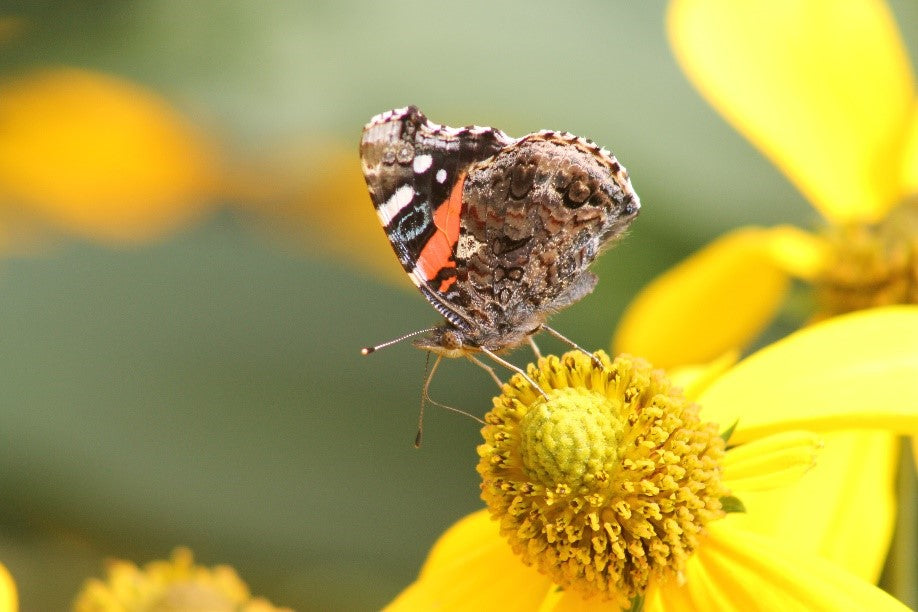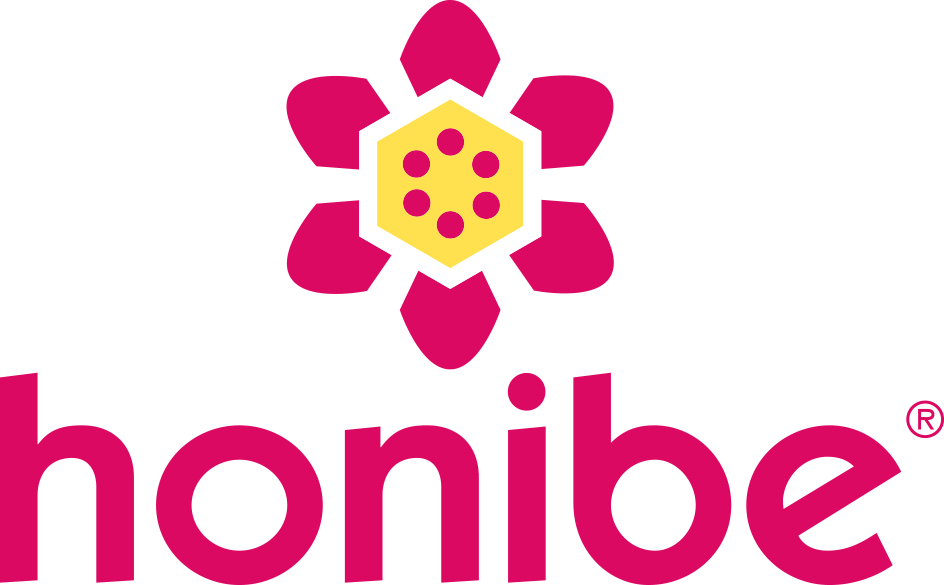
How To Attract Pollinators To Your Yard
National ‘Pollinator Week’ (June 22-28) is a time to celebrate our natural pollinators and spread the word about what you can do to protect them.
In keeping with this, Honibe wants to increase awareness about this important cause.
We are partnering with Pollinator Partnership Canada to share some information about the important role that pollinators have on our environment/food cycle.

What is pollination?
Pollination takes place when pollen grains are moved between two flowers
of the same species, or within a single flower.

These pollen grains are moved by wind or animals that are natural pollinators, like bees for example.
In addition to honey bees, there are over 800 types of native bees in Canada.
Additionally, there are other pollinators such as butterflies and hoverflies that are important for food production and pollination in natural areas.
The best way to help all pollinators is by providing habitat: from pots of flowers to a garden in your yard to meadows and hedgerows.
Together, we can make a difference!
Our docile (and mostly solitary) native bees need two main things to thrive:
- Flowers: to provide pollen and nectar for food
- Nesting sites: for pollinators to lay their eggs
Successful pollination may require visits by multiple pollinators to a single flower.
This process of pollination results in healthy fruit and fertile seeds, which in turn allows plants to reproduce.
Did you know that around 1,000 plants grown for food, beverages, fibers, spices, and medicines depend on pollinating animals in order to produce those goods?
Without pollinators we wouldn't have many crops, so they're job is vital to the survival of our planet.
We want to encourage people everywhere to take action in support of pollinating animals.
One way you can help pollinators do their important job is by encouraging them to spend time pollinating in YOUR yard.
Here are a few tips on how to make your yard pollinator-friendly, from pollinator experts themselves:

- Creating an enticing garden habitat is easy to do. Design your garden by choosing plants that flower continuously from spring through fall.
- Check for the species or plant variety that is best suited to your area and gradually replace lawn grass with flower beds.
- Plant native to your region using species that provide nectar for adult pollinators as well as food for insect larvae, such as milkweed for monarchs.
- If you do use non-native plants, choose ones that don't spread easily, since these could spread to other areas where you don't want them to grow.
- Select old-fashioned varieties of flowers whenever possible. Breeding has caused some modern blooms to lose their fragrance and/or the nectar/pollen needed to attract and feed pollinators.
- Install 'houses' for bats and native bees. For example, use wood blocks with holes or small open patches of mud. A house as small as 12” across is adequate for some species of bees.
- Avoid pesticides, even ones deemed "natural" such as Bacillus thuringiensis (Bt). If you must use them, use the most selective and least toxic ones and apply them at night when most pollinators aren't active.
- Supply water for wildlife. A dripping faucet or a suspended milk carton with a pinhole in the bottom is adequate for some insects, while other wildlife needs a small container of water.
- Supply water for pollinators like butterflies, without letting it become a mosquito breeding area. Refill containers daily or bury a shallow plant saucer to its rim in a sunny area, fill it with coarse pine bark or stones and fill it to the brim.
- Take some time to watch the pollinators visiting the flowers in your garden. You can become a Citizen Scientist by using the Insight App: https://insightcitizenscience.com/
If you’re interested in learning more about how you can help natural pollinators where you live, and more about the “Pollinator Partnership” program just head over to the website here: https://pollinatorpartnership.ca/en/
For more information on pollinators and which plants to choose for your region, check out Pollinator Partnership Canada’s Ecoregional Guides: https://pollinatorpartnership.ca/en/ecoregional-planting-guides
*** Stay tuned for our next blog: How to Construct a Mason-Bee Friendly Habitat at Home ***
..... Along with a surprise giveaway contest!!!




0 comments